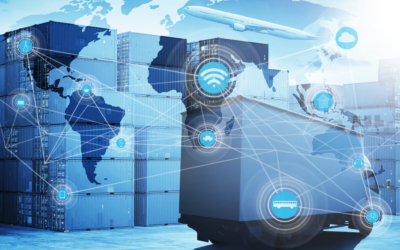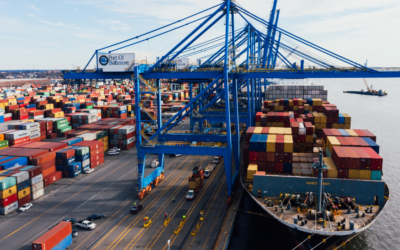In today’s economy, shipping remains the primary method of transporting goods from point A to point B. In fact, nearly 90% of the world’s trade is transported in this way. Altogether, shipping contributes to 3% of global emissions, more than the carbon footprint of Germany, which is nearly 138,000 square miles with a population of approximately 80 million. It’s no wonder there’s currently a global push to decarbonize shipping.
Decarbonization is the act of reducing carbon output. For the shipping industry, that primarily means shifting away from fuels that produce carbon dioxide and other greenhouse gas emissions, although there are other ways to achieve the goal.
The Situation: Alternative Fuels Are Still Being Developed
The International Maritime Organization has set a goal to reduce carbon emissions 40% by 2030 and 70% by 2050. The long-term goal is, of course, net-zero emissions. To achieve these numbers, carbon-neutral fuels need to be developed and available on a large scale at affordable prices. Also, carriers will have to be either retrofitted or built to accommodate the new fuels.
These efforts, of course, require collaboration as well as an investment in the future. Thankfully, most companies are on board and have options that can be implemented now, such as lowering the speed of ships, which could lead to a 20% reduction in emissions.
Projection: A Scalable Solution Is Key
As with anything new, expecting widescale, immediate adoption is futile. Instead, a scalable approach that can be rolled out over time is usually the best way to go. Such is the case with reducing the carbon footprint of the shipping industry.
Some suggestions of fuels that will help to decarbonize shipping are green ammonia and green hydrogen. Green ammonia replaces hydrocarbon-based hydrogen with hydrogen derived from water electrolysis powered by alternative energy. The resulting product is practically free of carbon dioxide. While all hydrogen emits only water when burned, the method of creating it is often carbon intensive. Green hydrogen is the only option made in a climate-neutral way, which will be a huge benefit in moving toward decarbonizing shipping.
Other alternative fuel options include methanol, nuclear, and wind. Wallenius Wilhelmsen, a Norwegian/Swedish shipping company, has plans to launch a wind-powered vessel in 2025. Other options are also being considered.
Recommendations: Decarbonizing Shipping Can Begin Now
According to one industry insider, most companies are committed to decarbonize shipping. That’s good because it’s going to take some work.
To make strides now, Sofar suggests optimizing shipping routes. This can be achieved using weather- and wave-predicting technology to illuminate the most energy-efficient routes. The company also suggests that shipping companies start to research alternate fuels and renewable energy. Kites are another good investment in the short term because they are more efficient than sails and wind turbines.
None of these measures alone will be effective at decarbonizing shipping, but every action helps. And by investing now, the shipping industry will be ahead of the International Maritime Organization’s goals for the future.
Stay Informed about the Future of Shipping
With Cyclone Shipping on your team, you can rest assured that we are always looking for your best options. We stay up to date about what’s coming down the pike, whether that’s an issue with port congestion, supply chain challenges, shipping digitalization, or decarbonizing shipping. We believe in the possibility of a better tomorrow, and we support the companies that are embracing these alternatives now.
If you’re looking for a shipping partner who has your best interests in mind and stays at the front of what’s coming next in the industry, we’d love to talk. Contact us to learn more.




